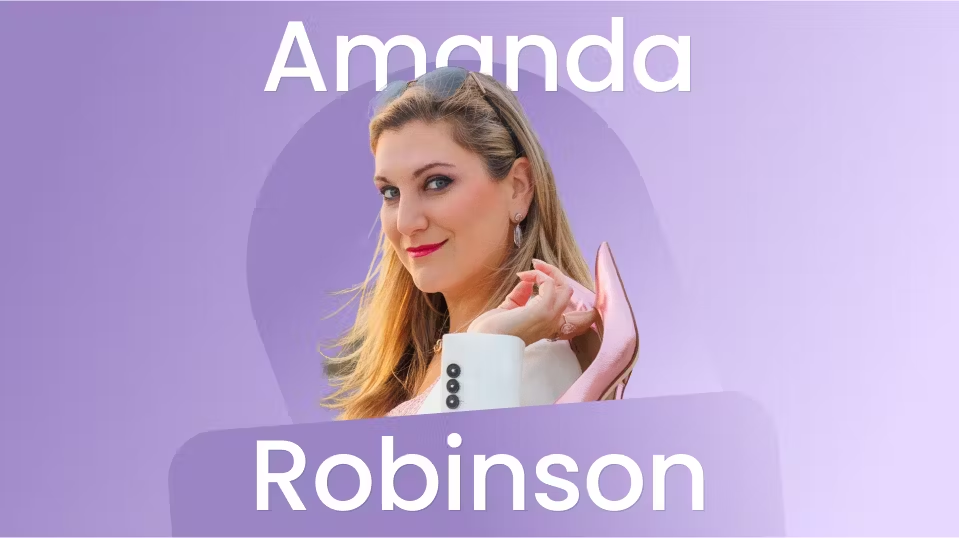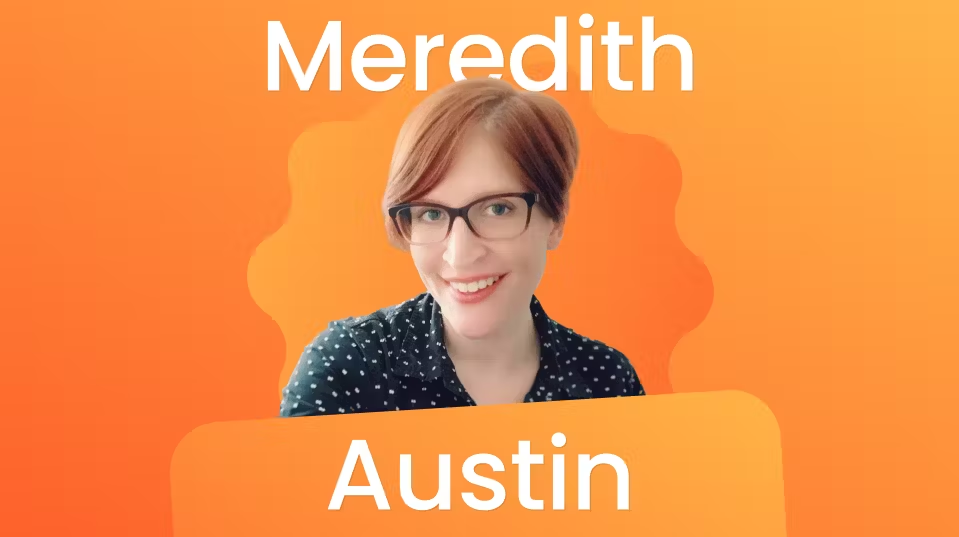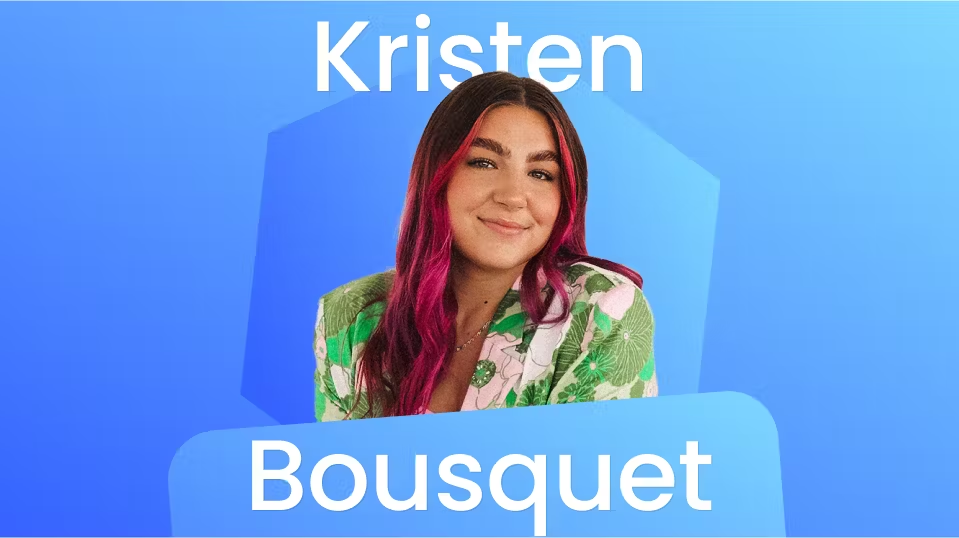8 Ways “The Digital Gal” Found Success In Her Niche

Nine years ago, Amanda Robinson’s fascination with Facebook ads was sparked by a successful $25 boost that sold out a community theater show. From that pivotal moment, she immersed herself in learning everything she could about Facebook advertising, soon finding herself sought after by small business owners through word-of-mouth referrals. “Before I knew it, this side hustle became my main focus,” she shares.
Since, she’s built a full-time business, The Digital Gal, around teaching Facebook advertising, and has built it into a multiple six-figure business. She splits her time between teaching workshops as a lead trainer for Meta, doing one-on-one client work, and teaching her online membership course via Thinkific called Swift Kick In The Ads. There, she helps small business owners become confident in running their own Facebook ads.
The key to her success? Finding — and sticking to — a niche. Here, we’re sharing Robinson’s online course creation journey to help inspire your own.
She narrowed down her services
When she first launched her business in 2015, she offered multiple digital marketing services, from email marketing to Google Analytics and Google Ads.
At the beginning, she said yes to nearly every client that wanted to work with her — until she took on too much work. “Over time, it got to the point where my business was growing in a direction that I wasn’t feeling passionate or inspired about,” explains Robinson.
Feeling overwhelmed and overworked she decided to diversify her income streams. But first, she had to narrow down her services. “If people can’t explain in one sentence what you do, then it’s hard for them to refer you to others,” she shares.
But once she honed in on Facebook Ads, people began referring her to more and more.
Her advice for creators who want to find their niche: ask people around you what you’re best at. “You might be really surprised at what they reflect back at you,” she shares. “And although you may have an idea of what you want to do or be known for, you might be pleasantly surprised with other opportunities that are suggested.”
She invested in professional branding
Once narrowing in on Facebook ads, Robinson took things one step further and invested in professional branding. Now, when people land on her website or social media, they’re met with a cohesive brand, colour scheme, and vibe. Suddenly, this made her credibility increase in the eyes of her audience.
“You need to do two things: make it easy for somebody to tell a friend about what you do, and make it easy for your brand to have a professional, recognizable look. That brand recognition helps give people the ability to connect the dots.”
She went from one-on-one to one-to-many
Once finding her niche, it was time to take a big leap: she fired most of her clients and took a step back from the one-on-one side of her business. “I wanted to have some breathing room to be able to go in the direction that I wanted to go,” she shares.
She didn’t want to only rely only on client work and speaking engagements. So, she decided to create an online membership course hosted on Thinkific. “I wanted to have other ways of building recurring revenue so that I could have more job security and impact more people,” explains Robinson.
“I wanted the ability to take my skills from one-on-one client work to one-to-many,” she shares. “I realized that I had so much to offer, and I needed to find a way to make myself accessible to people without overwhelming myself and working around the clock.”

She ran a beta version of her online program
But before launching her course officially, she built a beta version of it.
She ran a few people through the program at a reduced rate and received their feedback in return.
“Even though I’m good at what I do, I’m too close to it,” she shares. “Having people give me feedback was so helpful.”
Since running this beta program, she’s received tons more feedback and has been able to tweak the program to fit her audience’s needs. The result: a membership program tailored to beginners who want to run their own Facebook ads.
“Running a beta program was so valuable,” shares Robinson. “It helped me see my blind spots. Plus, having a group of people who are willing to help you refine something and genuinely believe in you and your skill set is so important.”
She chose a membership format
She decided to host her membership on Thinkific so that she, as a Canadian based out of Victoria, BC, could support another Canadian company. Plus, throughout her digital marketing network, she felt that Thinkific was highly regarded.
“I haven’t run across a single person who has anything poor to say about the platform,” she says. “I haven’t had any issues or complaints from any of my students. It’s been a very stable platform and I have no desire to seek out any other solutions; Thinkific is what’s allowed me to grow.”
Aside from the desire to have consistent, recurring revenue via a membership course, she also chose to format her program in this way because of the nature of what she teaches. By offering a mix of pre-recorded content, a Facebook group, and weekly, live “office hours” where people can directly interact with Robinson, she’s been able to help people get results. And, getting her students’ results helps them speak about her work and refer her to others.
“Facebook ads can be hard to learn in a self-serve way,” she shares. “You need a real human to talk to who can look inside your ad account, ask questions, and get you unstuck.”
“The ability to get on-camera together, share screens, and get people unstuck on the spot so that they can keep moving forward is a huge help when you’re on your own in a small business wearing all the hats,” she continues.
The membership format also allows people to slowly digest the content, allowing for breaks. Plus, since the platform changes so often, this format allows Robinson to continually update the information for her students every three months, ensuring that everything is aligned with the latest version of Facebook.
She focused on networking
The people who come to her course are either people who are trying to do Facebook ads themselves, or folks who have been doing ads for a while but need help leveling up.
Her audience is mainly aged 35 and older, spanning Canada, the United States, the United Kingdom, Australia and New Zealand. When it came to promoting her course, networking (as well as Facebook ads, of course!) has been her biggest ally. “Showing up to events, being present and building my network has gone so far,” she says.
“Facebook ads are great at amplifying what works in your business and what needs improvement. If you’re pouring marketing dollars into ads and you’re not getting results, then that’s giving you an indication that it’s amplifying an area that needs more attention.”
She says that, like Facebook ads, networking helps to amplify her business; if the person she’s networked with visits her website, she then has the opportunity to retarget them with ads. “My own ads have been instrumental in amplifying the work that I’m doing with networking, referrals, and creating community,” explains Robinson.
“I can’t say this enough: networking has been critical to building my business,” she adds. “If I removed the networking part out of it, it would have taken me ten times as long to build up to where I am now.”
Plus, using software to help her run her business efficiently in conjunction with Thinkific helped her to grow; her go-to technology has been Stripe and Paypal for collecting payments, Calendly for scheduling, and TextExpander for creating keyboard shortcuts.
She played the long game
Passionate about supporting small business owners, she priced her membership at $49/month so that it would be feasible.
Compared to a few years ago, Robinson believes that people are more price-sensitive now. “Selling high-ticket courses isn’t the same as it used to be,” she shares. “There are more course creators out there, and more content to choose from. I think finding the right balance between having a clear understanding of exactly who your audience is and who’s actually purchasing is a great way to meet people in the middle with your price.”
For Robinson, she thinks that a membership program gives people access to her information at a low cost, which is attractive for small business owners who don’t have a lot of budget. This means that people are able to stay in the program for multiple months—with many staying two years or longer. “Most people will find success around the six-month mark of engaging with the content and show up to office hours,” she says.
“I pay attention to attrition rates,” continues Robinson. “If I can keep someone for three months and they’ve had at least one face-to-face touch point with me, then they’ll stay for at least a year. I don’t have a touch point with them in those first three months, then they tend to cancel.”
She defined success for herself
Robinson is committed to defining success on her own terms. For her, this means waking up excited to work on her business every day and work from anywhere. “I do a lot of traveling and road tripping,” she says. “I carry a Starlink satellite with me and I charge a giant battery pack in my vehicle while I drive. I have a whole mobile office setup where I can run my business from anywhere.”
Aside from finding a niche, she advises that online creators take their time to build a course.
“Don’t get discouraged if you set yourself a six-month timeline and all of a sudden a year from now, you’re not where you want to be. Stick with it.”
“Don’t be hard on yourself as a business owner,” she reminds creators. “Just embrace all of the changes and roll with the punches.”
If you have an idea for an online course and want to try launching it, start your free trial today.
See related Case Studies
-

How Academity’s 12,000-Strong Community is Broadening the Definition of Gifted Education
Read more: How Academity’s 12,000-Strong Community is Broadening the Definition of Gifted EducationLearn how Texas teacher Meredith Austin developed an online education program empowering teachers nationwide.
-

How Storytelling Collective is Helping 12,000 RPG-Writers Unlock Their Creative Process
Read more: How Storytelling Collective is Helping 12,000 RPG-Writers Unlock Their Creative ProcessAshley Warren fell in love with stories when she was a little girl. Whether she was submitting fictional tales to her local library competition or
-

How Kristen Bousquet Helps Her (150+) Members Monetize
Read more: How Kristen Bousquet Helps Her (150+) Members MonetizeFind out how Kristen Bousquet earns more than $4,000 USD in monthly recurring revenue thanks to courses and memberships.
